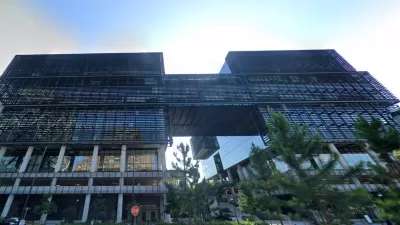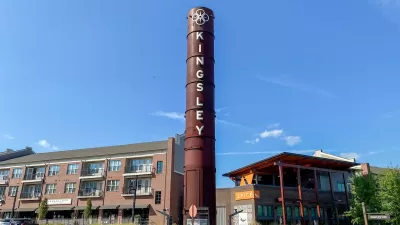Chuck Wolfe's recent reconnaissance of Edinburgh provides a foil for his rallying cry: Going forward, let’s not discount the influence of history’s recurring themes in how we redevelop the urban realm.

 Through words and photographs, Wolfe argues for a longer view when advocating for the sorts of urban change sought today, including increased awareness of how similar situations were addressed in the past. He notes:
Through words and photographs, Wolfe argues for a longer view when advocating for the sorts of urban change sought today, including increased awareness of how similar situations were addressed in the past. He notes:
Height, density, use/control of land and public health in urban settings have evolved for a very long time. We can build on this urban history of reinvention and renewal and think more universally about how past, present and future define urban development.
Citing others, he explains change in cities as a constant, and how specific themes of long-term habitation can create broader ways of understanding the cyclical nature of urban reinvention. Examples include current trends towards increased height, cooperative living spaces and smaller dwellings, compared with medieval forces that brought similar conditions:
[P}laces like Edinburgh’s world heritage areas show that our current ability to meet these goals safely is reflective of lessons learned long ago, when overpopulated and unsanitary conditions within city walls eventually inspired new understandings of urban disease control.
Wolfe summarizes lessons from Edinburgh Old Town for today's alleys and laneways, and resilient adaptive reuse. From Edinburgh's 18th century New Town he finds a physical form that provides testament to the power of interventionist planning when a municipality has a broad swath of land assembled for a common purpose.
He concludes with questions about the nature of urban change, and how a global economy integrates with an evolving urban artifact:
[T]o an American observer from Seattle, one hometown image—the Starbucks logo—particularly stands out... storied history and modern lifestyle communicate their “age value” to one another from a vaunted wide avenue of the New Town. Looking up from the New Town’s George Street, midway between St. Andrews and Charlotte Squares, medieval past and global future speak to their uniting element: human ingenuity and reinvention, across the ages.
FULL STORY: why urban history matters

Alabama: Trump Terminates Settlements for Black Communities Harmed By Raw Sewage
Trump deemed the landmark civil rights agreement “illegal DEI and environmental justice policy.”

Study: Maui’s Plan to Convert Vacation Rentals to Long-Term Housing Could Cause Nearly $1 Billion Economic Loss
The plan would reduce visitor accommodation by 25% resulting in 1,900 jobs lost.

Planetizen Federal Action Tracker
A weekly monitor of how Trump’s orders and actions are impacting planners and planning in America.

Waymo Gets Permission to Map SF’s Market Street
If allowed to operate on the traffic-restricted street, Waymo’s autonomous taxis would have a leg up over ride-hailing competitors — and counter the city’s efforts to grow bike and pedestrian on the thoroughfare.

Parklet Symposium Highlights the Success of Shared Spaces
Parklets got a boost during the Covid-19 pandemic, when the concept was translated to outdoor dining programs that offered restaurants a lifeline during the shutdown.

Federal Homelessness Agency Places Entire Staff on Leave
The U.S. Interagency Council on Homelessness is the only federal agency dedicated to preventing and ending homelessness.
Urban Design for Planners 1: Software Tools
This six-course series explores essential urban design concepts using open source software and equips planners with the tools they need to participate fully in the urban design process.
Planning for Universal Design
Learn the tools for implementing Universal Design in planning regulations.
Caltrans
Smith Gee Studio
Institute for Housing and Urban Development Studies (IHS)
City of Grandview
Harvard GSD Executive Education
Toledo-Lucas County Plan Commissions
Salt Lake City
NYU Wagner Graduate School of Public Service





























